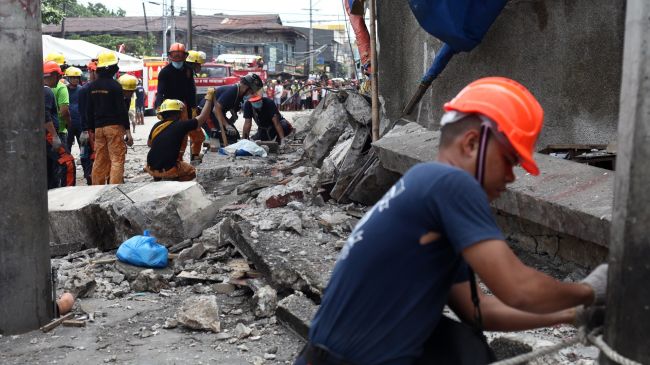
A temblor measuring 7.2 on the Richter scale struck early on Tuesday, crumbling a number of buildings and cracking roads on Bohol Island and the Cebu Island, near Balilihan region, the US Geological Survey (USGS) announced.
According to the Philippines Office of Civil Defense, at least 15 people have been killed in the city of Cebu, 16 in the province of Bohol, and one in the province of Siquijor, following the powerful quake.
Hundreds more have been wounded and at least 33 others are reported missing.
The quake has also destroyed centuries-old monuments and modern buildings in and around Balilihan, one of the Philippines' major tourist hubs.
The officials warned that the death toll could rise, though they expressed relief that the quake occurred on a public holiday.
Tuesday's quake was followed by at least four aftershocks, each measuring more than 5.0 in magnitude. The epicenter was located 629 kilometers from the capital Manila.
The Philippines sits on the Pacific Ring of Fire, which is an area with intense seismic and volcanic activity caused by friction between shifting tectonic plates.
In February 2012, more than a hundred died or went missing after a 6.9-magnitude earthquake hit Negros Island in the Visayas, some 100 kilometres from the epicenter of Tuesday's temblor.
In 1976, a 7.9 magnitude quake struck the Moro Gulf on the southern island of Mindanao, killing between 5,000 and 8,000, according to the Philippines official estimates.



Reader Comments
to our Newsletter